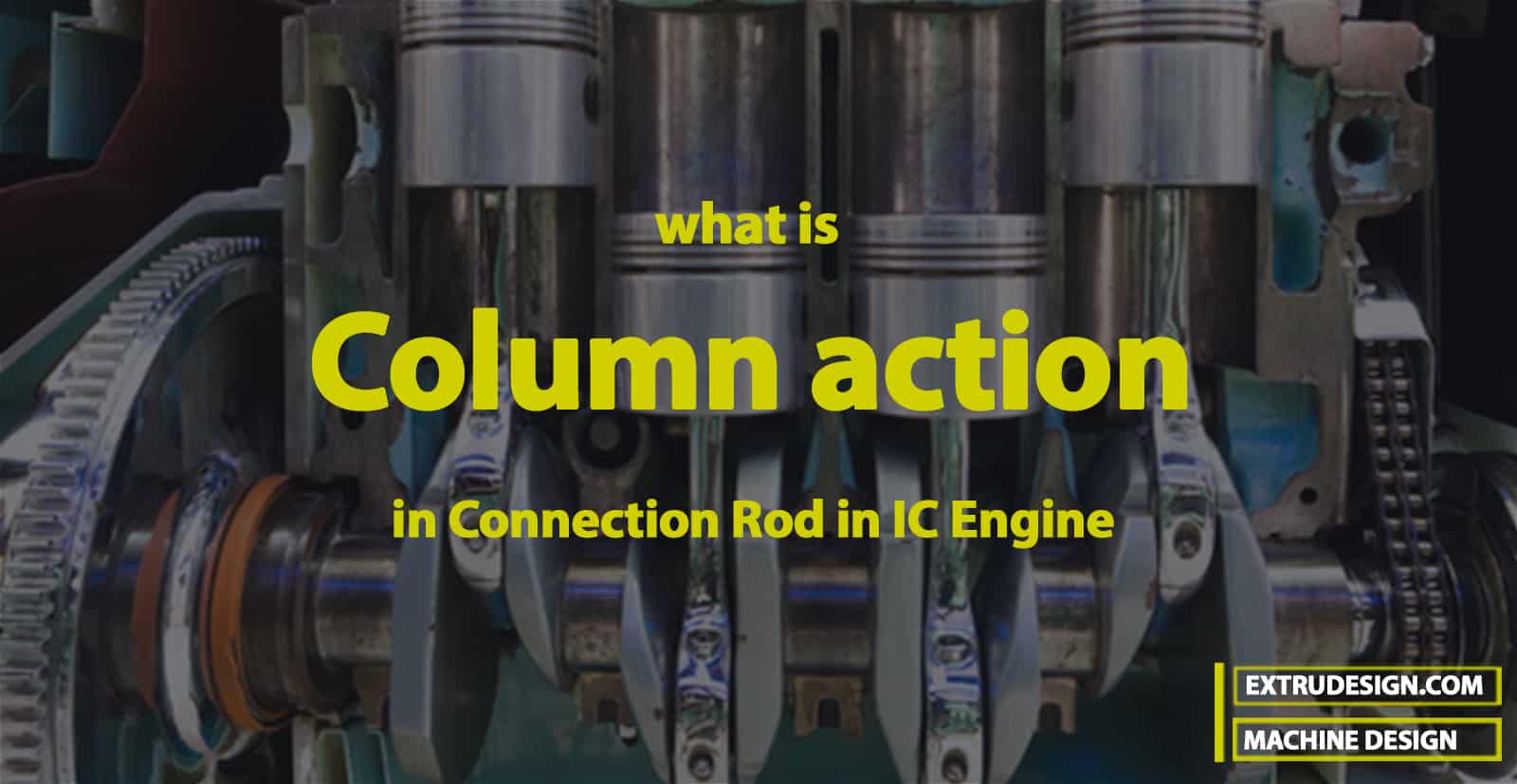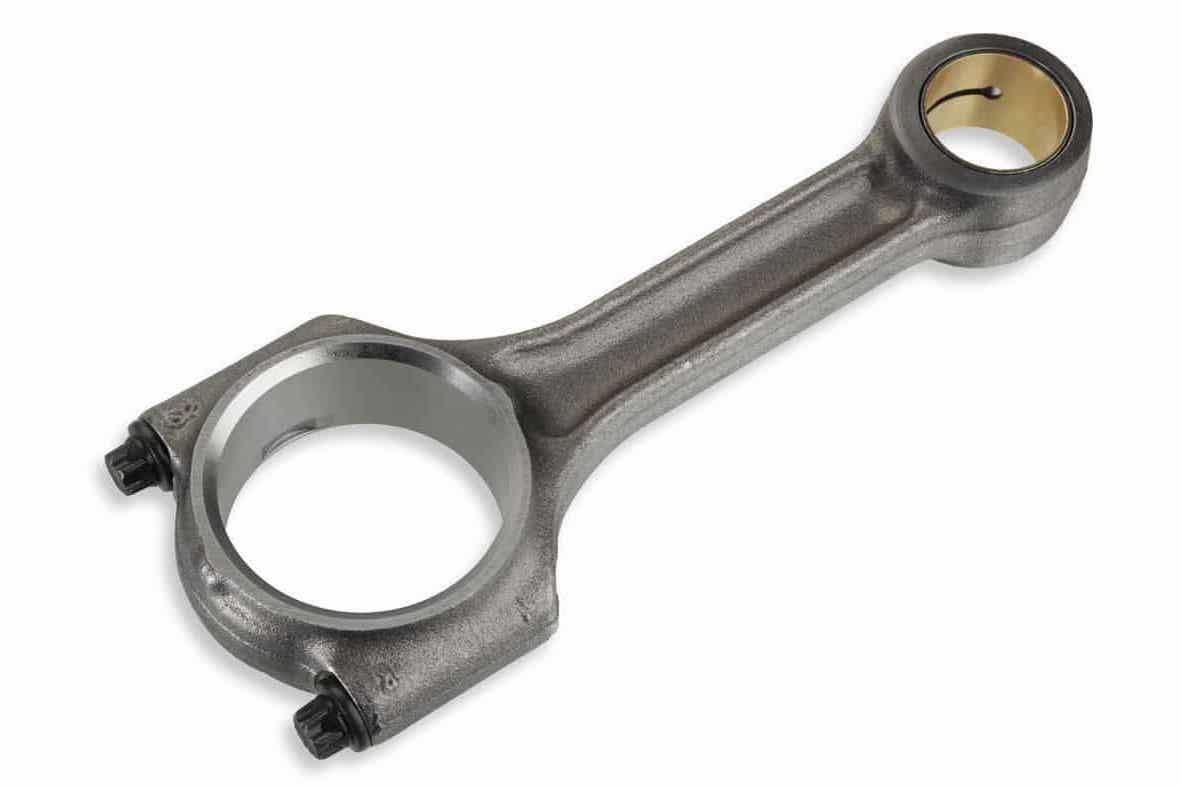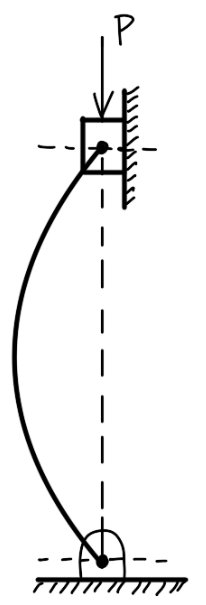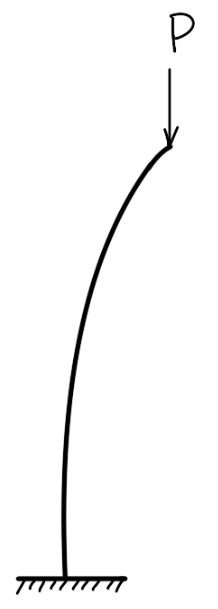A machine part subjected to an axial compressive force is called a strut. A strut may be horizontal, inclined, or even vertical. But a vertical strut is known as a column, pillar, or stanchion. The machine members that must be investigated for column action are piston rods, valve push rods, connecting rods, screw jack, side links of toggle jack, etc. Let us discuss column action, Failure of a Column or Strut and types of end conditions of columns.

Column
As we have already mentioned that the machine part subjected to a vertical axial compressive force is called a column. it is also known as pillar or stanchion. We see this vertical axial compressive force such as piston rods, valve push rods, connecting rods, screw jack, side links of toggle jack, etc.

Failure of a Column or Strut
- It has been observed that when a column or a strut is subjected to a compressive load and the load is gradually increased, a stage will reach when the column will be subjected to the ultimate load.
- Beyond this, the column will fail by crushing and the load will be known as a crushing load.
- It has also been experienced, that sometimes, a compression member does not fail entirely by crushing, but also by bending i.e. buckling.
- This happens in the case of long columns. It has also been observed, that all the short columns(columns that have lengths < 8 times their diameter) fail due to their crushing.
- But, if a long column(columns that have lengths > 30 times their diameter) is subjected to a compressive load, it is subjected to compressive stress.
- If the load is gradually increased, the column will reach a stage, when it will start buckling.
- The load, at which the column tends to have lateral displacement or tends to buckle is called buckling load, critical load, or crippling load, and the column is said to have developed an elastic instability.
- The buckling takes place about the axis having a minimum radius of gyration or the least moment of inertia.
- It may be noted that for a long column, the value of the buckling load will be less than the crushing load.
- Moreover, the value of buckling load is low for long columns, and relatively high for short columns.
Types of End Conditions of Columns
In actual practice, there are a number of end conditions for columns. We can not discuss all of them but the fundamental types which help us understand all the other types of end conditions for columns. These fundamental types were described by Mr. Euler. He derived an equation, for the buckling load of long columns based on the bending stress. While deriving this equation, the effect of direct stress is neglected. This may be justified with the statement, that the direct stress induced in a long column is negligible as compared to the bending stress. It may be noted that Euler’s formula cannot be used in the case of short columns, because the direct stress is considerable, and hence cannot be neglected.
we shall study the Euler’s column theory on the following four types of end conditions which are important from the academic point of view:
Both the ends are hinged or pin jointed as shown in the following figure.

Both the ends are fixed as shown in the following figure.

One end is fixed and the other is hinged as shown in the following figure.

One end is fixed and the other is free as shown in the following figure.

This is brief introduction about columns. let us know what you think about this article in the comment section below.

Leave a Reply